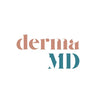Stretch marks, medically known as striae distensae, are a common skin condition that affects individuals of all ages, genders, and body types. These marks, characterized by streaks or lines on the skin, often appear in areas where the skin has been stretched due to rapid growth, weight gain, pregnancy, or hormonal changes. While they pose no health risks, they can impact self-esteem and confidence. Understanding their causes and treatment options is essential for effective management.
Causes
Stretch marks occur when the skin is stretched beyond its normal capacity, leading to the breakdown of collagen and elastin fibers in the dermis. This can happen during puberty, pregnancy, rapid weight gain or loss, bodybuilding, or hormonal fluctuations. Genetics also play a role, as some individuals are more predisposed to developing stretch marks than others.
Treatment Options:
1. Topical Treatments:
Retinoids: Topical retinoids, derived from vitamin A, can help improve the appearance of stretch marks by promoting collagen production and increasing skin elasticity. However, they are not recommended for use during pregnancy or breastfeeding.
Hydration: Keeping the skin well-hydrated with moisturizers can help improve its elasticity and reduce the severity of stretch marks. Ingredients such as hyaluronic acid, centella asiatica, shea butter, and cocoa butter are particularly beneficial.
Vitamin E: Applying vitamin E oil or creams may help fade stretch marks over time by promoting healing and regeneration of the skin.
Exfoliation: Regular exfoliation with gentle scrubs or chemical exfoliants can help remove dead skin cells and improve the texture of stretch marks.
2. Minimally Invasive Procedures:
Microneedling:
Also known as collagen induction therapy, microneedling involves creating tiny punctures in the skin with fine needles to stimulate collagen production and improve skin texture.
MNRF: This has completely taken over the role of microneedling, as it combines microneedling along with a radiofrequency energy that is delivered through microneedles into the dermis, which can provide a massive boost to collagen production.
Laser Therapy:
Various laser treatments, such as fractional laser therapy and pulsed dye laser therapy, can target stretch marks by stimulating collagen production and promoting skin remodelling.
PRP therapy:
This is usually done in combination with the above modalities such as microneedling or MNRF. A growth factor concentrate called Platelet Rich Plasma is prepared from your own blood (drawn like in any regular blood test) and this concentrate is injected into the dermis of your skin. This too helps with collagen building and can aid the role of the microneedling or MNRF that you pair it with.
Conclusion:
While stretch marks are a common cosmetic concern, they do not pose any health risks. However, they can affect one's confidence and self-image. Fortunately, there are numerous treatment options available, ranging from topical creams to minimally invasive procedures, that can help improve the appearance of stretch marks and restore skin confidence. Consulting with a dermatologist is recommended to determine the most suitable treatment plan based on individual needs and preferences. With proper care and treatment, achieving smoother, more even-toned skin is attainable for those affected by stretch marks.







